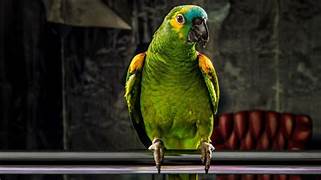Can I Have a Red Panda as a Pet?
Red pandas are adorable animals that have captured the hearts of many people worldwide. With their distinctive reddish-brown fur, bushy tails, and masked faces, it's no wonder why people might consider keeping them as pets. However, before making this decision, it's essential to understand the complexities and challenges involved in owning a red panda as a pet.

Factors to Consider
1. Legal Considerations:
In many countries, keeping red pandas as pets is illegal or heavily regulated. These animals have specific habitat requirements and specialized care needs that cannot be easily met in a domestic setting, making it unethical and potentially dangerous to attempt to keep them as companions.
2. Complex Dietary Needs:
Red pandas have a specialized diet that mainly consists of bamboo, which is difficult to source and maintain in a domestic setting. They also require a variety of other fruits, vegetables, and insects to ensure a balanced and nutritious diet. Providing the appropriate food and ensuring their dietary needs are met can be challenging and time-consuming.
3. Social and Environmental Needs:
Red pandas are arboreal animals that spend a significant amount of time in trees. They require a spacious and enriched environment that allows them to climb, jump, and explore. Confining them to a small space or keeping them indoors can severely compromise their well-being and lead to health issues.
Risks and Concerns
1. Health Problems:
Red pandas are susceptible to various health issues in captivity, including gastrointestinal problems, respiratory infections, and behavioral disorders. These animals have sensitive digestive systems and specific nutritional needs, making it difficult to provide adequate care for common ailments.
2. Risk of Injury:
Red pandas have sharp teeth and claws that they use for defense and climbing. They can inflict serious injuries on humans, especially if they feel threatened or uncomfortable. Additionally, their arboreal nature increases the risk of falls and other accidents in a domestic setting.
3. Ethical Concerns:
Keeping red pandas as pets raises several ethical concerns. These animals are wild creatures that should not be removed from their natural habitats. They belong in the wild, where they can live with their own kind and engage in their natural behaviors. Keeping them in captivity can cause distress and deprive them of the opportunity to live as they should.
Alternatives to Pet Ownership
1. Support Conservation Efforts:
If you are passionate about red pandas, consider supporting conservation organizations that work to protect these animals and their habitats. Donate to these organizations, spread awareness about the challenges they face, and advocate for the preservation of their natural environments.
2. Visit Zoos and Sanctuaries:
Zoos and sanctuaries that specialize in caring for red pandas can provide a safe and enriching environment for these animals. Visiting these facilities allows you to learn more about them, witness their natural behaviors, and contribute to their well-being through admission fees and donations.
3. Educate and Raise Awareness:
Educate yourself and others about the unique characteristics and challenges facing red pandas. Share information about their conservation status, the importance of their natural habitats, and the ethical considerations involved in keeping them as pets.
Conclusion
While red pandas are captivating creatures, they are not suitable pets. Their complex dietary needs, specialized habitat requirements, and risk of health problems make caring for them a daunting task. Keeping them in captivity can compromise their well-being and raise ethical concerns. Instead, supporting conservation efforts, visiting zoos and sanctuaries, and educating others about these animals are more responsible ways to appreciate and protect them.
Declaration: All article resources on this website, unless otherwise specified or labeled, are collected from online resources. If the content on this website infringes on the legitimate rights and interests of the original author, you can contact this website to delete it.





